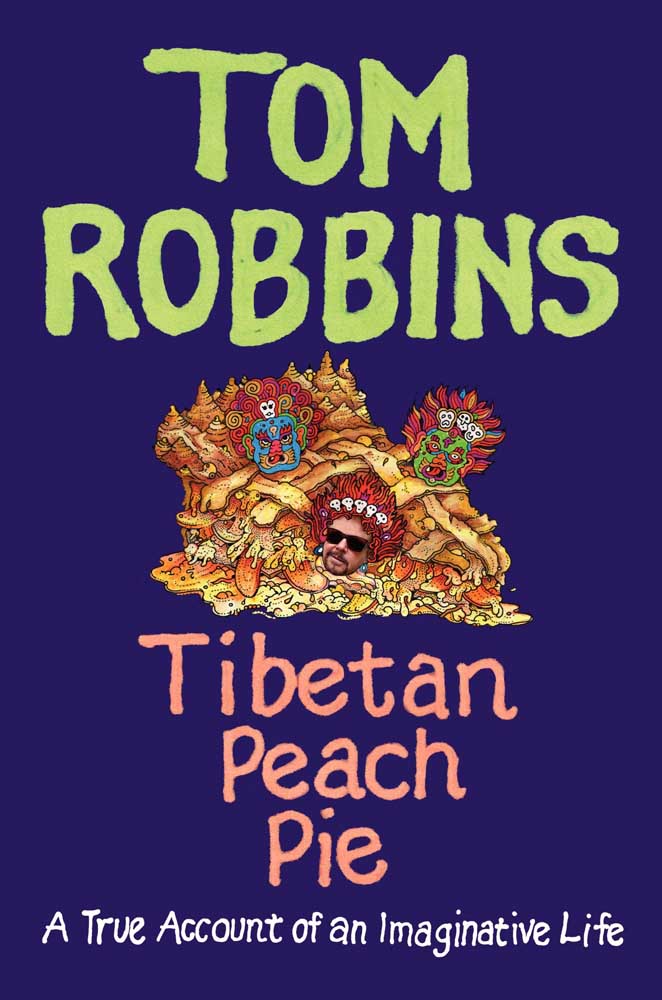Robbins still casts a spell in memoir
Published 12:00 am Sunday, June 1, 2014

- Robbins still casts a spell in memoir
“Tibetan Peach Pie” by Tom Robbins (Ecco, 384 pgs., $27.99)
If you are a baby boomer who can remember when and where you first read Tom Robbins’ breakout novels (“Another Roadside Attraction,” “Even Cowgirls Get the Blues,” “Still Life with Woodpecker”), you might approach a Robbins memoir with subliminal dread. Though you’re dying to read it, you might wonder: Can the bard of your youth still touch your mind and heart? Can Robbins, a man who believes in magic, still cast a spell? Can he still call forth his singular mix of insight, philosophy and kaleidoscopic imagination?
Having read “Tibetan Peach Pie,” I can report — Yes, yes and yes.
“Tibetan Peach Pie” is not really a memoir. Rather, it’s “a sustained narrative composed of the absolutely true stories I’ve been telling the women in my life,” Robbins writes — his wife, his sisters, his agent, his yoga teacher, etc. It’s a chain of interlinked stories about a long and very eventful life.
Robbins was born in 1932 in the North Carolina hill country. Both grandfathers were preachers. Born in a South before air conditioning or TV came along, books, movies and imagination were his magic carpet. It’s a minor miracle that his straight-laced parents accepted the idiosyncrasies of a child whose imaginative thermostat was “set permanently on high.”
Some of the best passages in “Tibetan Peach Pie” hearken back to this time: “Allowed to roam freely in both the streets and the woods, I observed and interacted not only with the wonders of nature but with an assortment of squirrel hunters, rabbit trappers, berry pickers, banjo pickers, moonshiners, tramps, real Gypsies, snake handlers, mule-back preachers (like my grandpa), eccentric characters with names such as Pink Baldwin and Junebug Tate, and perhaps most influential, bib-overalled raconteurs, many of whom spun stories as effortlessly and expertly as they spit tobacco juice.”
He made up stories and talked to himself, walking the backyard in circles while his parents watched, drumming a rhythm with a “talking stick.”
“My folks never once ridiculed me, tried to dissuade me or (to the best of my knowledge) consulted a child psychologist,” he writes.
At age 20, a college dropout, he enlisted in the Air Force and became a trained meteorologist. Stationed in Korea, he visited Japan and developed a lifelong love of Japanese art and culture.
Post-military, Robbins went to work for the Richmond, Va., newspaper. He loved the word play of editing and headline writing, but he riled up white readers by putting Louis Armstrong’s picture on the front page. Richmond’s racism and hidebound class system eventually drove him west, and he landed in Seattle in 1962. He found his kind of place: “Seattle, the mild green queen: wet and willing, cedar-scented, and crowned with slough grass, her toadstool scepter tilted toward Asia, her face turned ever upward in the rain.”
Robbins sashayed his way through a couple of newspaper jobs. Then a Doubleday editor contacted him about writing a book about art — instead, he sold his idea for a novel guaranteed to hit the sweet spot of the counterculture — the story of the owners of a Skagit County flea circus who come into possession of the mummified body of Jesus Christ (1971’s “Another Roadside Attraction”).
Eventually “Tibetan Peach Pie” loses narrative steam. Robbins becomes successful, and more circumspect. The latter chapters are travel pieces (Robbins apparently loves to travel) or vignettes that don’t cohere with the rest of book.
But it’s a gift to his fans, and though it won’t satisfy his detractors, it may earn him some new and younger readers. “Tibetan Peach Pie” is the story of a man who had the sense to follow where his imagination led — “my wild card, my skeleton key, my servant, my master,” he writes. How lucky for his readers that we got to tag along for the ride.






